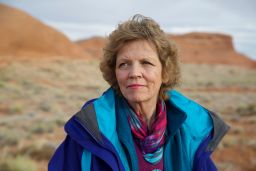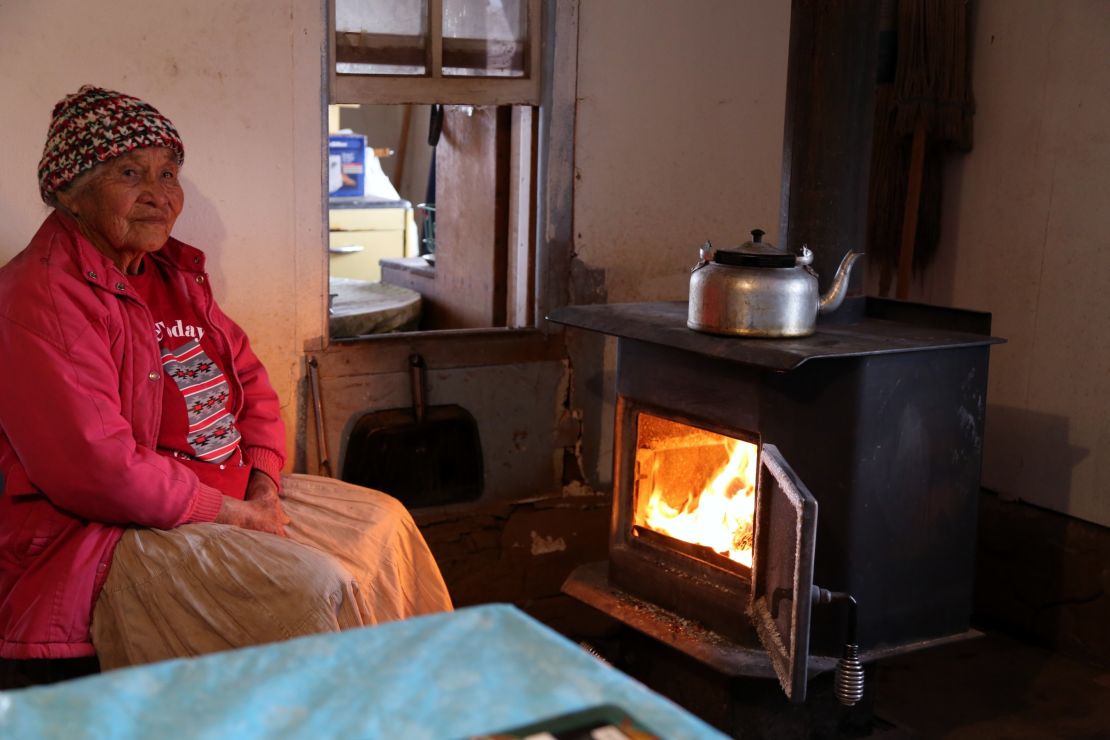Editor’s Note: Nominate a CNN Hero now.
Story highlights
Elderly Native Americans often struggle living on their own in remote areas
Linda Myers' nonprofit Adopt-A-Native-Elder has served elders in need for three decades
In some of the vast, remote areas of the Navajo Reservation, supplies and services can be hours away. In winter, temperatures can dip to zero.
And elderly Native Americans often struggle, alone.
“You find elders without food. Many don’t have running water or plumbing,” said Linda Myers, who has spent 30 years seeking out Navajo elders and helping them to survive.

Myers and her nonprofit, Adopt-A-Native-Elder, travel to 11 impoverished areas of Arizona and Utah, bringing aid to Navajo elders 75 and older.
One of the group’s main goals, Myers says, is to keep the elders warm through the winter.
“They need fires going all the time. And if they don’t, there is a great chance that they could freeze to death.”
For the last three decades, Myers and her group have helped an estimated 3,000 Navajo Nation elders with life-saving food, firewood and medical supplies, allowing them to stay connected to their traditional lives.
“Most of these elders were born and raised on the lands that they live on today. And they have a deep sense of connectedness to the land,” Myers said. “They believe this is the life that their people were chosen to live.”
CNN’s Allie Torgan spoke with Myers about her work. Below is an edited version of their conversation.
CNN: How did you learn about the Navajo elders and their needs?
Linda Myers: Thirty-three years ago, I saw a documentary called “Broken Rainbow” about Navajo people and their way of life, and it’s been life-changing for me. Before I saw the documentary, I actually had no idea of the Navajo culture or people.
My goal was to find a way to help them sustain themselves, because I was just a single mother. And so I offered to bring their rugs back and sell their rugs and send them the money.
One of the grandmothers had said, ‘Is there somebody who would adopt me?’ I thought, ‘That’s what I’ll do is I’ll take pictures of them and put their needs out and send it out and see if anybody will help these elders.’
I was one person in the beginning, but today there are so many people who step in to touch the lives of the elders.
CNN: How does someone “adopt” an elder in your program?
Myers: Our goal is to find sponsors to help each of these elders with firewood, with food, with supplies. We send you a picture of an elder, and you can send them things through the program, anything that can really benefit them.
What’s happened in the process is many of these sponsors come to the land and meet these elders. And it’s so meaningful to the elder who doesn’t know where California or New York or any of these places are, but they know that some kind person, every year, sends them these things they need and sends them little cards and pictures.

I live in Park City, Utah, and I come out here about six times a year. I do two food runs a year, where about 150 volunteers join us. From our warehouse in Salt Lake City, all the food is caravanned down here.
CNN: How hard is it for you to reach some of these elders?
Myers: It takes me usually eight to 10 hours to get here. Sometimes I find out that the roads are so deep and muddy, you can’t get to the elders. So, you either go in early, early in the morning when the ground’s frozen, or late at night. Otherwise it becomes impossible to visit them.
It’s an amazing feeling to come out here, and an elder says, ‘I’ve been waiting for you. I’ve been praying for you that you would have a safe trip and that you would come and see me.’
Maybe it’s destiny in my life. I think it’s truly a destiny that brings you to a place that you actually know you belong; even though you do not understand the language, you know that you belong in this place.
Want to get involved? Check out the Adopt-A-Native-Elder website and see how to help.
To donate to Adopt-A-Native-Elder, click the CrowdRise widget below.




































